Your cart is currently empty!
Emela-Ntouka
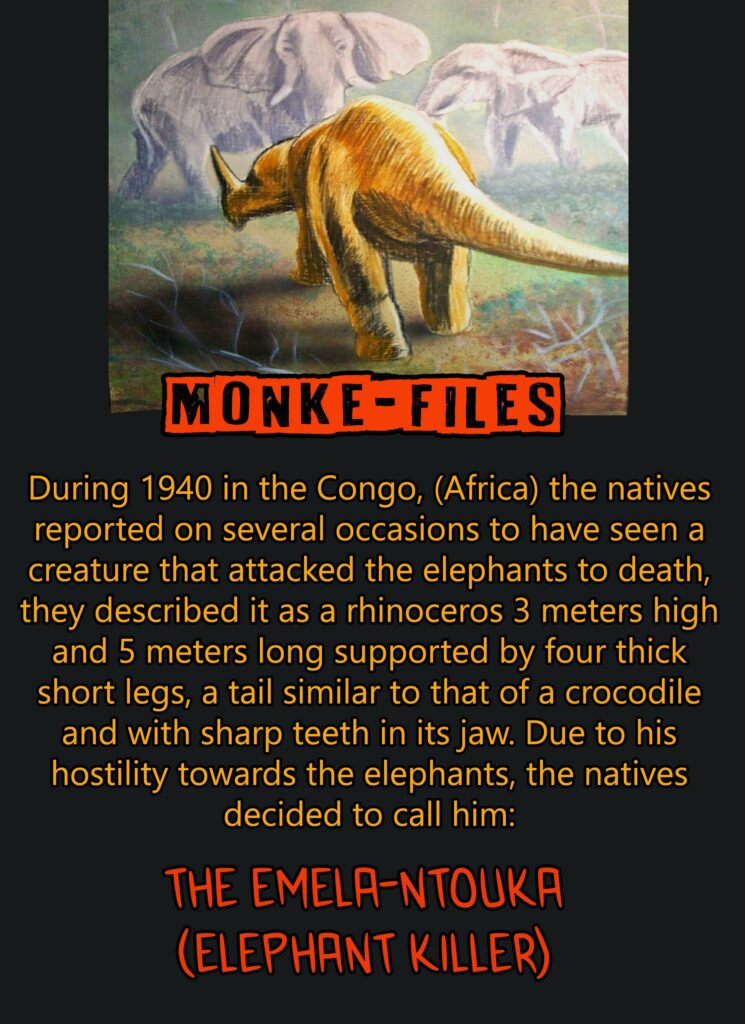
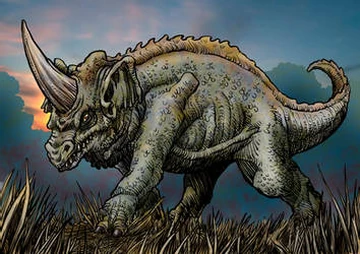
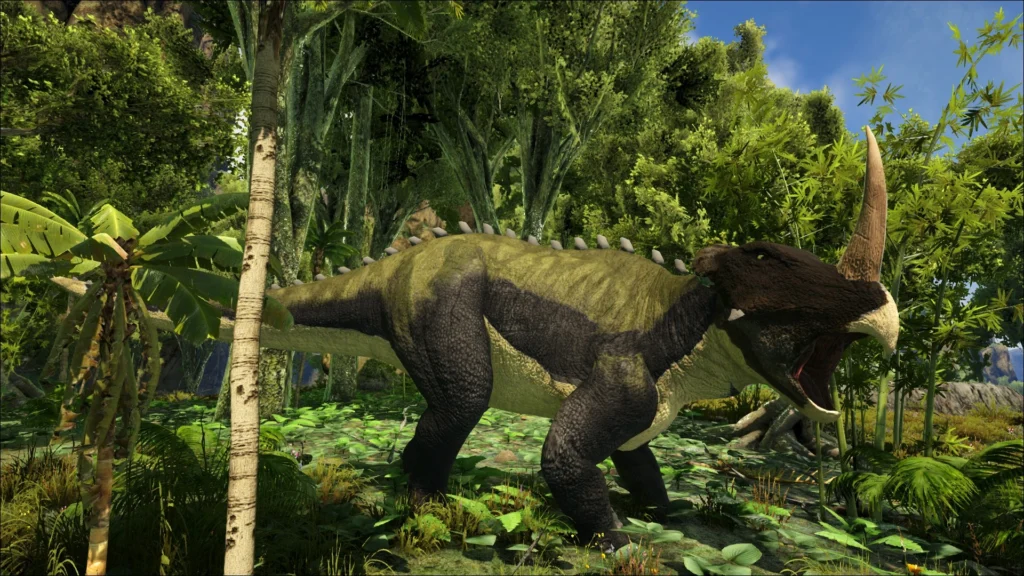
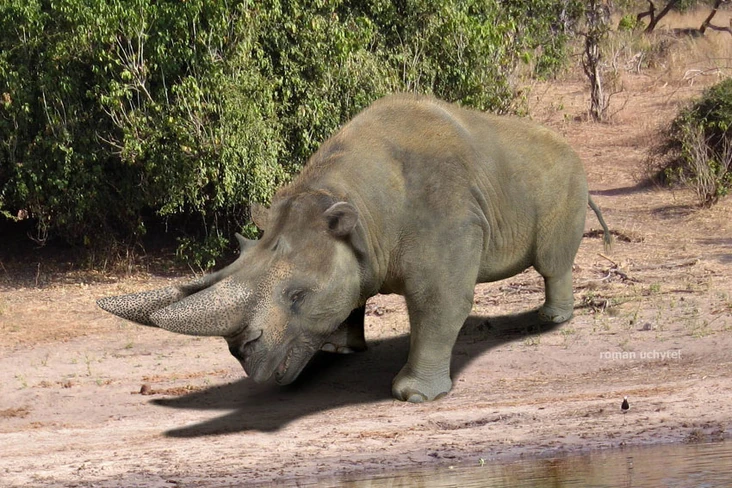
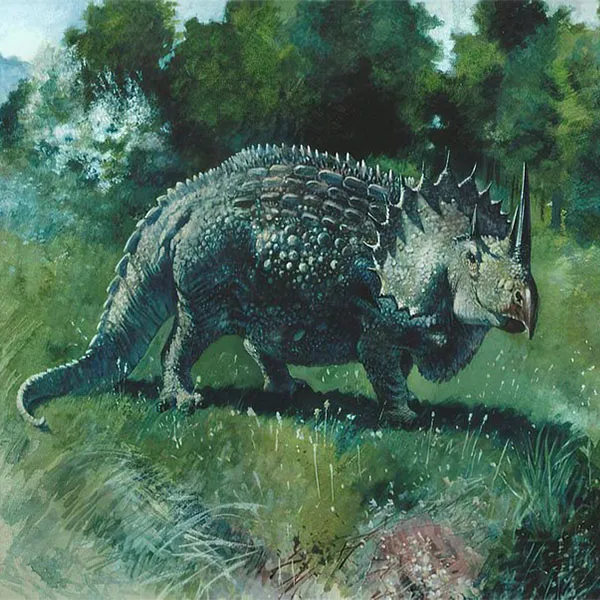

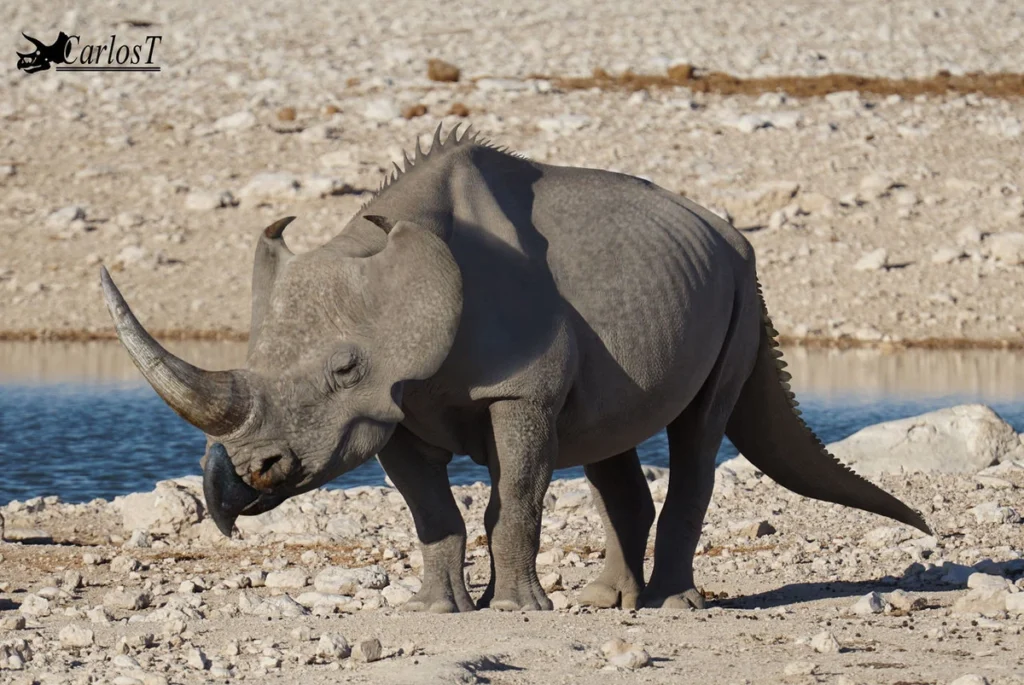
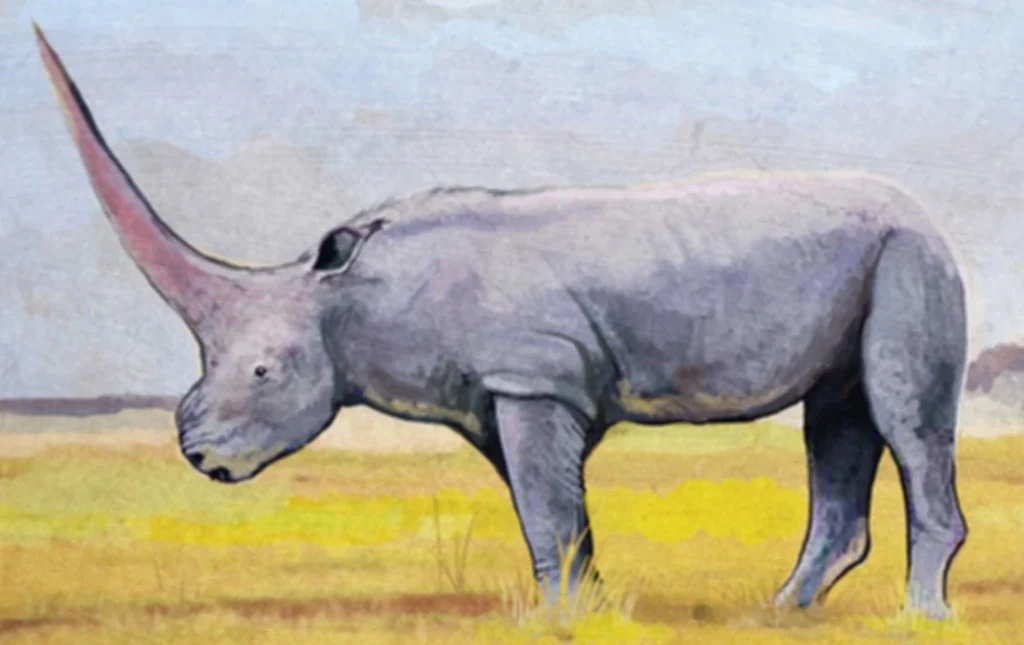
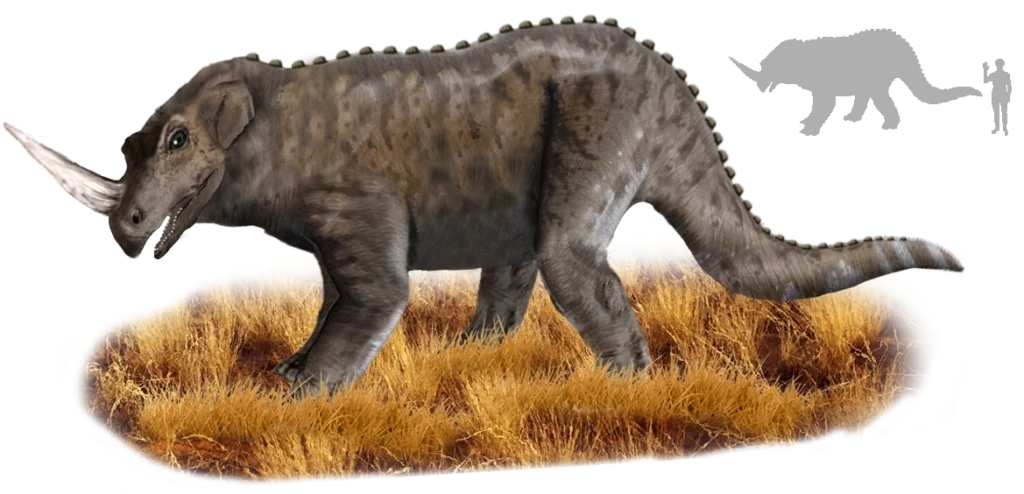
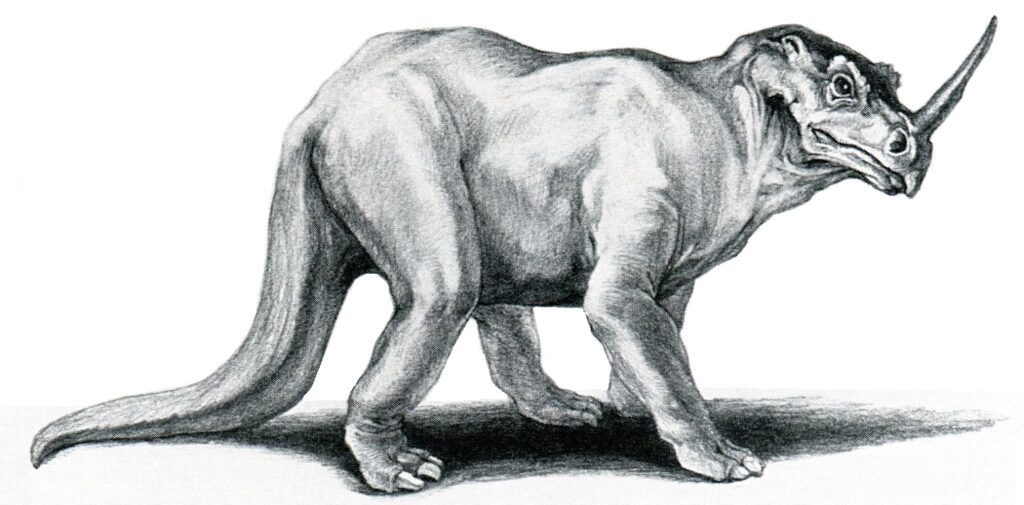
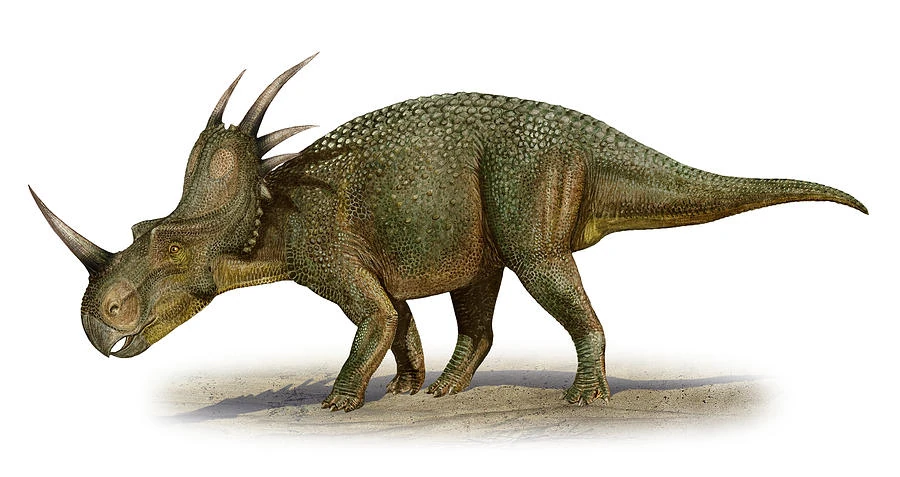
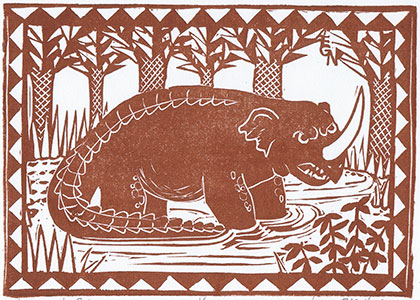
A Supposed Living Dinosaur of the Congo Basin
The Emela-Ntouka (Bomitaba or Lingala: “killer of elephants” or “eater of the tops of trees”) is one of the most enigmatic cryptids reported in the Likouala Swamp region of the Republic of the Congo. Described as a large, horned beast with immense strength, this cryptid has been compared to ceratopsian dinosaurs like Centrosaurus or Styracosaurus, as well as a mysterious species of rhinoceros. Unlike the more famous Mokele-Mbembe, which is often linked to sauropod dinosaurs, Emela-Ntouka is feared for its aggression, particularly against elephants and other mammals (Blancou, 1954; Mackal, 1987).
Physical Description
- Size: Comparable to an elephant or large buffalo.
- Body Shape: Sturdy, quadrupedal, and rhinoceros-like.
- Skin: Thick, hairless, and either gray or reddish-brown.
- Horn: A single large nasal horn, described as ivory-like, unlike a rhinoceros horn which is composed of keratin.
- Tail: Long and crocodilian, which does not match modern rhinoceroses (Mackal, 1987).
- Legs: Thick and muscular, capable of moving both in water and on land.
- Head and Frill:
- Some reports lack a ceratopsian neck frill, while others claim it appears in certain subspecies or only in males.
- The similarity to Centrosaurus exists due to its prominent nose horn (Gibbons, 2018).
Notable Behavioral Traits
- Extreme Aggression
- Emela-Ntouka is hostile toward mammals, particularly elephants, buffaloes, and hippos (Blancou, 1954).
- Witnesses claim it will gore large animals to death with its single horn and leave them to bleed out.
- Omnivorous Tendencies
- While primarily described as an herbivore, its extreme aggression and reported behavior of killing without eating have led to theories that it could be omnivorous.
- Fear Among Locals
- The Kellé Pygmies and Bomitaba people in the region fear it more than any other animal (Regusters, 1982).
- They describe it as far more dangerous than elephants, crocodiles, or big cats.
- Possible Territorial Behavior
- It is often sighted near swamps, lakes, and rivers, similar to rhinoceroses and hippopotamuses.
- Attacks on elephants suggest that it sees them as rivals for food or territory (Mackal, 1987).
Sightings and Historical Accounts
Lucien Blancou’s Report (1954)
- French colonial wildlife inspector Lucien Blancou described a ferocious, elephant-sized creature feared by the Kellé pygmies.
- He mentioned reports of elephants being disemboweled by this beast.
- A specimen was allegedly killed in the 1930s near Dongou, on the left bank of the Ubangi River, in what was then the Belgian Congo (Blancou, 1954).
Dr. Roy Mackal’s Expeditions (1981)
- While searching for Mokele-Mbembe, Mackal was surprised to hear numerous reports of Emela-Ntouka.
- Natives described it as a horned beast that killed elephants.
- Mackal proposed that it could be a surviving Centrosaurus but acknowledged the lack of a frill in some reports.
- He noted that a rhinoceros was unlikely, given its short tail and different horn composition (Mackal, 1987).
Herman Regusters’ 1981 Account
- Regusters received reports of three dead elephants found floating in a river, each killed by a horn piercing the abdomen.
- This ruled out poaching, as their ivory was untouched.
- Locals blamed Emela-Ntouka for the attack (Regusters, 1982).
Later Expeditions and Artistic Depictions
- Jean-Claude Kerhoas and Michel Ballot (2000s-2010s) documented carvings and illustrations of Emela-Ntouka, some showing it with small, elephant-like ears.
- In 2012 and 2013, drawings from the Central African Republic (1980s and 1990s) were found, depicting Emela-Ntouka disemboweling an elephant (Ballot, 2014).
Theories on Its Identity
Surviving Ceratopsian Dinosaur (Disputed)
- Early cryptozoologists theorized that Emela-Ntouka could be a relic ceratopsian, possibly a Centrosaurus or Monoclonius (Mackal, 1987).
- Strengthening this theory:
- Its large nasal horn matches Centrosaurus.
- Some reports mention a frill, though inconsistently.
- Problems with this theory
- No ceratopsian fossils have ever been found in Africa.
- Ceratopsians were terrestrial while Emela-Ntouka is described as semi-aquatic.
- The frill is not a consistent feature across reports (Shuker, 2016).
A Large, Undiscovered Rhinoceros (Leading Theory)
- Many cryptozoologists now believe Emela-Ntouka is an unknown species of rhinoceros, possibly related to:
- Elasmotherium, an extinct giant rhino with a massive horn.
- Arsinoitherium, a prehistoric African mammal with paired horns (Freeman, 2012).
- Supporting this theory:
- The behavior aligns with known rhinoceroses.
- The nasal horn matches a rhinoceros’ structure.
- Ancient relatives of rhinoceroses once lived in Africa (Drinnon, 2011).
- Problems
- The long crocodilian tail does not match any known rhinoceros.
- Reports of an ivory-like horn contradict keratin-based rhino horns.
Locations of Reported Sightings (Based on Map and Records)
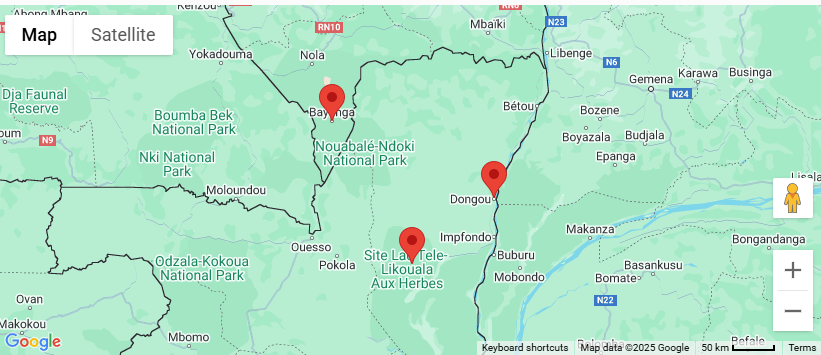
- Bayanga (Dzanga-Sangha National Park, Central African Republic)
- Aka people report sightings here.
- Near Cameroon and Congo border.
- Nouabalé-Ndoki National Park (Republic of the Congo)
- Heavily forested with potential cryptid activity.
- Dongou (Republic of the Congo)
- Alleged killing of an Emela-Ntouka in the 1930s.
- Impfondo (Republic of the Congo)
- Witness testimonies collected here.
- Site La-Tele-Likouala Aux Herbes (Republic of the Congo)
- Lake Télé, a hotbed for both Emela-Ntouka and Mokele-Mbembe reports.
Sources Cited
- Blancou, Lucien (1954). “Notes sur les Mammiferes de l’Equateur Africain Francais.” Mammalia 18: 358-363. *English translation included*
- Mackal, Roy (1987). A Living Dinosaur? In Search of Mokele-Mbembe. Brill.
- Regusters, Herman (1982). “Mokele-Mbembe: An Investigation into Rumors.” Munger Africana Library Notes 64.
- Ballot, Michel (2014). À La Recherche du Mokélé-Mbembé. TRESOR.
- Shuker, Karl (2016). Still In Search Of Prehistoric Survivors. Coachwhip Publications.
- Freeman, Richard (2012). Africa’s Mystery Rhino. Fortean Zoology.
- Drinnon, Dale (2011). “The African Unicorn, Killer of Elephants.” Frontiers of Zoology.
- Gibbons, William J. (2002). “In Search of the Congo Dinosaur.” Impact #349. Institute for Creation Research.
Leave a Reply